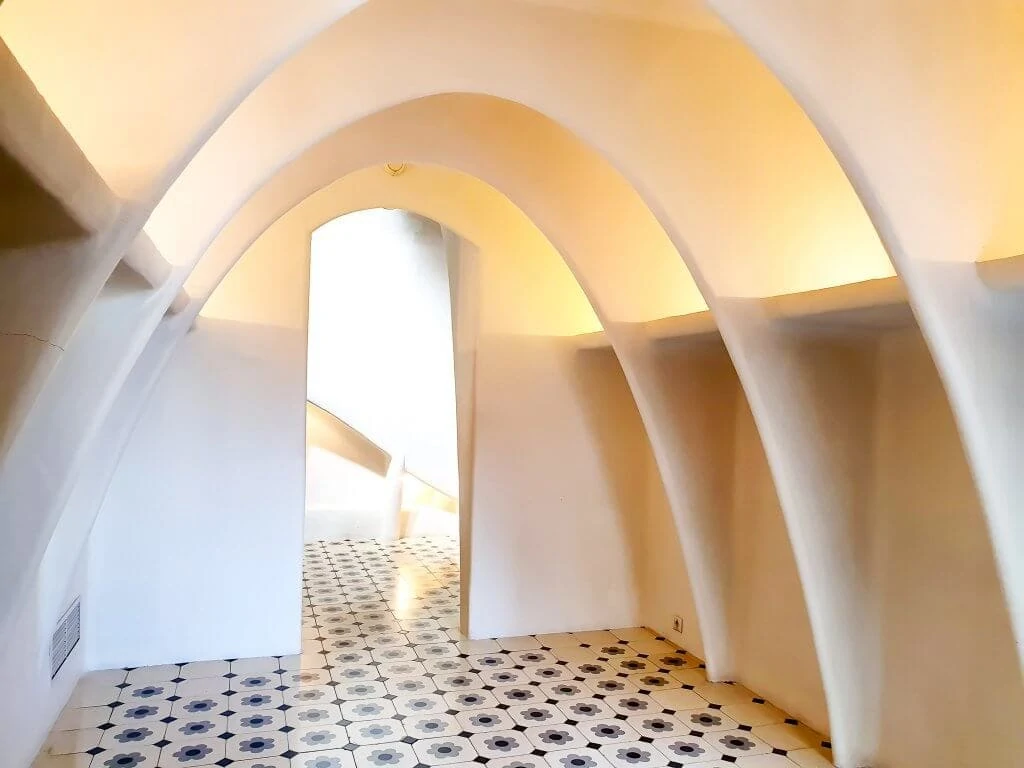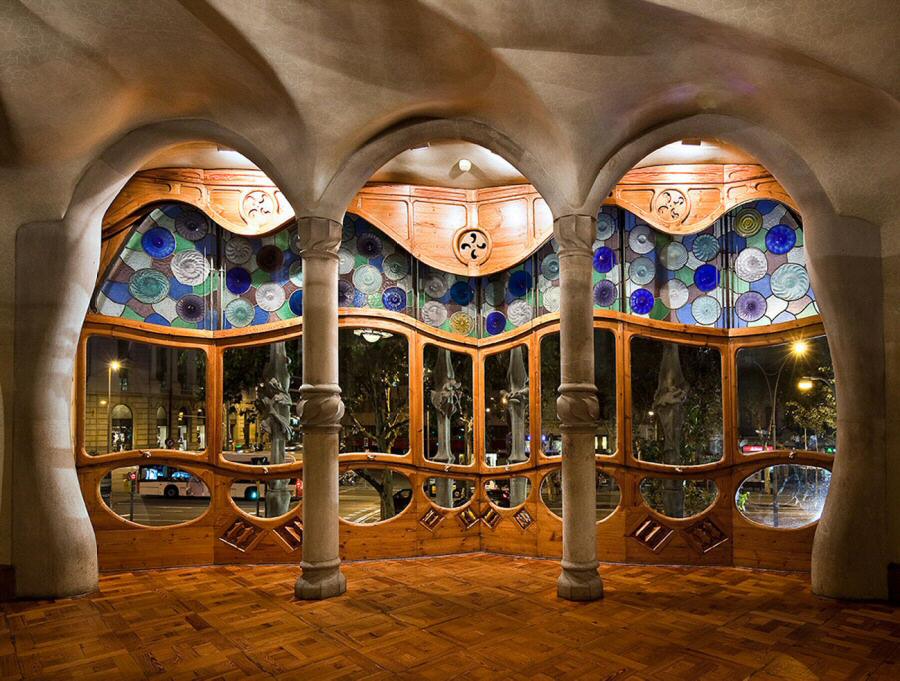What is Casa Batlló?
The world-famous Casa Batlló can be found at number 43 on Paseo de Gracia, which previously served as a connection between Barcelona and the neighboring town of Villa de Gracia.
The Paseo de Gracia has been the residence of some of Barcelona’s most prominent families since the Cerdà Plan, an ambitious urban plan, was implemented in 1860. The street went through these changes to become a significant highway for automobiles in the 20th century; in the 19th century, it was a promenade for walkers and horse-drawn carriages.
The structure was erected in 1877 by Gaud’s professor Emilio Sala Cortés, when Barcelona still lacked reliable access to electricity. Mr. Josep Batlló y Casanovas, a wealthy entrepreneur and important industrialist in the Barcelona textile sector, bought it in 1903.
Mr. Josep Batlló authorized Antoni Gaud to demolish any unnecessary portions of the structure. Between 1904 and 1906, Gaud’s audacious efforts to rebuild the mansion prevented its demolition. Without changing the outside in any way, the architect moved some of the inside walls, widened the lightwell, and turned the room into a piece of art. The building is aesthetically pleasing, as is typical of modern architecture, but it also performs its function admirably. Some people think that 20th-century fashions are the inspiration for 21st-century looks.
While construction was underway on Casa Batlló, competing for urban honors from the Barcelona City Council was a priority for many other renowned architects. The expression “The Bone of Contention” emerged around this time. Besides Casa Batlló, other prime examples of the modernist architectural style are:
By the 1950s, the Batlló family no longer had any emotional ties to Casa Batlló. The Bernat family bought it in the 1990s and have painstakingly restored it to its former glory.
After much discussion, the family decided in 1995 to open their home to the general public. Cultural tours of Casa Batlló have been offered since 2002, during the International Year of Gaud. Both are currently possible thanks to the ever-growing quantity and quality of available data.
Casa Batlló is a must-see for any Gaud or modernist architecture buffs who find themselves in Barcelona. It is one of the most popular tourist spots in the world, attracting over a million visitors annually.

An interior full of art
Casa Batlló‘s interior is a work of art in its own right.Gaud worked with the finest craftsmen of his day to create intricate designs in wrought iron, wood, stained glass, ceramic tiles, and ornamental stone.
Touring the home never fails to astound visitors with its intricate design. There are modern-style letters on the doors that lead to the various units. Waterlike swirls are distorted into the lightwell tiles by the windows at each landing. Ergonomic designs were used for the door handles and handrails. Design, color, shape, space, and light—everything about this piece was crafted by the artist.
You will always be surprised by this zeal, but the most astonishing part is that it is grounded in necessity. Every part of the structure, from the lobby all the way up to the rooftop terrace, is a harmonious blend of aesthetics and utility.

Interior de Casa Batlló The Entrance Hall
Through a stunning modernist grid, the public entrance hall on the ground level connects to the private entrance hall used by the Batlló family. This is the first of several stops on the trip. Skylights that look like turtle shells, vaulted walls with curved curves, and a beautiful wooden staircase all work together to make this room feel like you’ve entered the magical world of Jules Verne. Hardwood banisters are intricately carved to resemble the spine of a massive creature that is able to rise in the most inhospitable of environments.

The Entrance Hall The Noble Floor
The Noble Floor is the focal point of the home, featuring a one-of-a-kind hall that exemplifies the pinnacle of modernity and describes life for the bourgeoisie at the time.
The floor opens out into Mr. Batlló’s study, which features a unique fireplace in the shape of a mushroom. This opens out into the main living area, which features a wide picture window that looks out onto Paseo de Gracia and is perfect for people-watching. The massive wood doors are one of the most striking features, with organic curves into which Gaud integrated stained glass panes and a completely undulating ceiling, which conjures the power of the sea.

The Noble Floor Lightwell
Light and air are distributed throughout the home from the main skylight, which is why the lightwell is so important. Gaud made sure that the house was filled with natural light by enlarging the patio (there was already one, and he added another). To further ensure that the light was diffused evenly, he painted it with tiles in varying shades of blue, with darker tiles toward the ceiling and lighter ones toward the floor.
In a similar vein, the windows get bigger (and so let more light in) as they move down. Wooden slats in the lower windows can be opened or closed to regulate airflow.
The elevator was strategically placed by Gaud in the middle of the lightwell. Its ornate first-generation wooden elevator is still in service.

Lightwell Indoor garden
The Batlló family has exclusive use of the Noble Floor’s central dining room, which opens out into a private courtyard at the back of the building. The pavers and the tile and glass-coated flower pots are the most eye-catching features of this area.

Indoor garden Loft
The loft is one of the most distinctive environments, and it is a wonderful example of how beauty and utility can be harmoniously combined. In the past, it served as a service area for the occupants of the building and contained things like storage areas, laundry rooms, and other similar amenities.
It is characterized by the simplicity of its shapes, the influence of the Mediterranean through the use of the color white, and the pervasive light that permeates the space. It is comprised of sixty catenary arches, which work together to produce an area that is reminiscent of the ribcage of an animal.

Loft Roof terrace
The roof terrace is dominated by a feature that is commonly referred to as the dragon’s back. This feature is what distinguishes the facade of the building and was rendered by Gaud using tiles of varying colors. However, the four crooked and multicolored chimney stacks, which were created in order to prevent backdrafts, constitute the primary point of interest of the roof terrace. At the most magnificent and iconic house of Catalan modernism, beauty and usefulness are once again brought together to create a harmonious whole.




